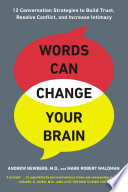

Words are not just tools for communication; they shape our thoughts, emotions, and actions. The authors emphasize that the language we use can influence our mental state and the way we perceive the world. Positive language can foster optimism and resilience, while negative language can lead to stress and anxiety. This idea underscores the importance of choosing words carefully, not only in personal interactions but also in self-talk. By harnessing the power of positive language, individuals can create a more constructive and empowering internal dialogue, which can lead to improved mental health and enhanced interpersonal relationships.
Continue readingThe book delves into the neuroscience behind how language affects our brains. It discusses how words can trigger neural pathways and influence brain chemistry, which in turn can affect our mood and behavior. For instance, the authors explain how positive words can release neurotransmitters like dopamine and serotonin, which are associated with feelings of happiness and well-being. Conversely, negative words can lead to the release of stress hormones like cortisol. Understanding this connection between language and brain function can empower readers to make conscious choices about the words they use and encounter in their daily lives.
Continue readingEffective communication is fundamental to successful relationships, whether personal or professional. The book highlights how the words we choose can either build bridges or create barriers in our interactions with others. By using language that promotes understanding, empathy, and respect, we can enhance our relationships and foster collaboration. The authors provide practical tips for improving communication skills, such as active listening and using affirming language. This idea is particularly relevant for leaders and team members who want to cultivate a positive work environment and strengthen team dynamics.
Continue readingMindfulness plays a crucial role in how we use language. The authors advocate for being present and aware when communicating, which allows us to choose our words more thoughtfully. Mindful communication involves paying attention to the impact of our words on ourselves and others. This concept encourages readers to pause before speaking, consider the potential effects of their words, and strive for clarity and kindness. By practicing mindfulness in communication, individuals can reduce misunderstandings and conflicts, leading to more meaningful interactions.
Continue readingThe book discusses the power of affirmations as a tool for personal growth and self-improvement. Affirmations are positive statements that can help individuals challenge and overcome negative thoughts and beliefs. By regularly repeating affirmations, people can rewire their brains to focus on their strengths and potential rather than their limitations. The authors provide examples of how affirmations can be used in various contexts, from boosting self-esteem to enhancing performance in challenging situations. This idea encourages readers to incorporate affirmations into their daily routines as a means of fostering a positive mindset.
Continue readingLeadership is heavily influenced by the language leaders use. The book emphasizes that effective leaders harness the power of words to inspire, motivate, and guide their teams. The authors discuss how leaders can use language to create a shared vision, build trust, and foster a culture of collaboration. By being intentional with their words, leaders can shape the organizational culture and drive positive change. This idea is especially relevant for current and aspiring leaders who want to enhance their communication skills and improve their leadership effectiveness.
Continue readingThe book offers practical techniques for transforming communication practices to be more effective and impactful. These techniques include using open-ended questions, practicing active listening, and employing non-verbal communication cues. The authors also stress the importance of feedback and how it can be delivered constructively. By adopting these techniques, individuals can enhance their communication skills, leading to better outcomes in both personal and professional settings. This idea serves as a guide for readers looking to improve their interactions and achieve more meaningful connections.
Continue reading